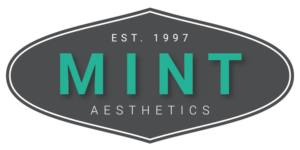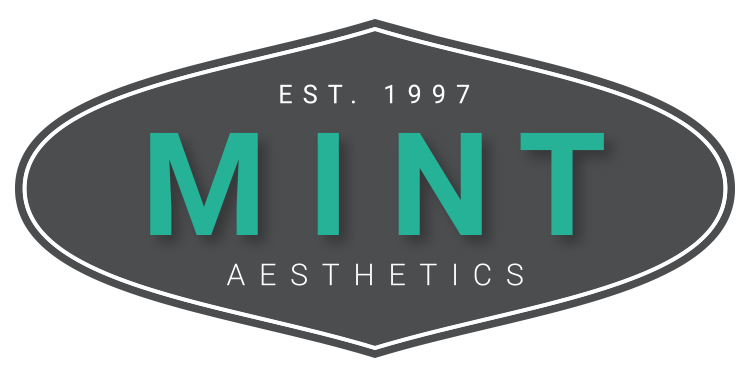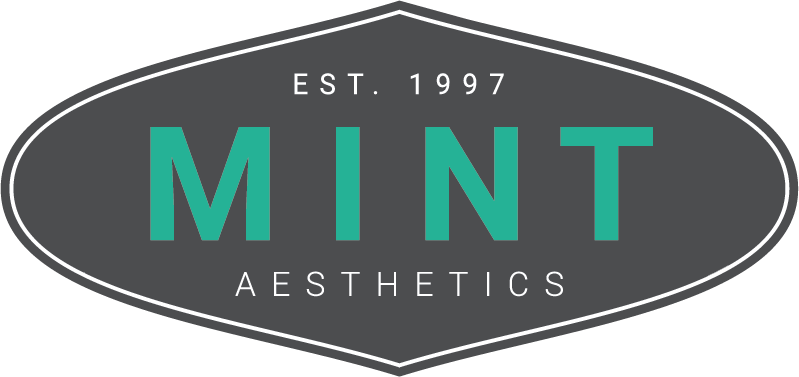You’ve invested in laser technology, hired promising new providers, and now you’re ready to expand your service offerings.
But here’s something many practices overlook: when outcomes fall short, it’s rarely the laser’s fault. More often, it comes down to gaps in provider knowledge. When new team members jump into treatments without fully understanding how they work, they’re more likely to make mistakes that impact the final results and put your reputation at risk.
The difference between a one-time visit and a loyal patient often comes down to how well you’ve prepared your providers to handle the sophisticated technology at their fingertips. At MINT Aesthetics, we’ve seen this play out firsthand. Through years of running AesthetiCare, our own high-volume medspa in Kansas City, we’ve learned that strong training isn’t just something that’s nice to have. It’s the thing that makes everything else work.
Laser Training for Beginners

The path from novice to laser guru isn’t mysterious or complex, but it does require a systematic approach to training that builds knowledge layer by layer, starting with the fundamentals before moving on to more advanced concepts.
Starts With the Basics
Laser tech can be intimidating when you’re new. For providers without much exposure to it, even the terminology can be confusing. That’s why we always start with the basics. You want your team to understand not just how lasers work, but why.
“How” focuses on the mechanics of the laser technology, such as wavelengths and energy settings. But the “why” provides context and knowledge of underlying principles like skin physiology and laser-tissue interaction. This deeper understanding allows for better decision making and the ability to adapt treatments for different skin types, conditions and goals.
So what does starting with the basics look like?
Laser safety. Always. No exceptions. These are powerful tools that, when used with knowledge and care, have the potential to transform, but like any advanced technology, they demand respect. To keep themselves and patients safe, providers need to master concepts like the nominal hazard zone, proper eye protection, and what happens when laser energy meets different chromophores in the skin.
Beyond laser safety, foundational training should cover the relationship between fluence, pulse duration and spot size. Until you can make sense of the relationship between these variables, it’s easy to create results that are inconsistent. Memorizing settings instead of understanding them is one of the most common (but fixable!) mistakes we see.
Diving Into Advanced Concepts
Once the fundamentals are in place, the next step is helping providers understand the small but critical details that shape good outcomes. These include advanced concepts like thermal relaxation time, the importance of test spots, and how factors like a recent trip to the beach or daily retinol use can change the skin’s response to treatment.
“Reading the skin” in real-time is another critical skill to develop, and this one is learned by doing, not just watching. Slight erythema might mean everything’s on track for one laser while being clinically insignificant for another. Learning to recognize these subtle cues takes time and practice. It’s one of the hardest skills to teach but is essential for preventing both under-treatment and complications.
Mistakes That New Providers Make
Even when the basics are covered, new providers tend to hit the same roadblocks. Knowing what those are ahead of time makes it easier to spot and fix them early.
- Cranking up the energy, hoping for faster results.
New providers often think that more power equals more impact, but too much energy can increase the risk of adverse events without necessarily improving efficacy. Factors like Fitzpatrick type, previous treatments (or lack thereof), and even pain tolerance can lead to undesired outcomes with higher energy. The goal is to find the sweet spot, balancing safety with effectiveness.
- Changing multiple settings at once.
New providers are more likely to change device settings without understanding how they interact with others. They might increase both fluence and pulse duration, not realizing they’ve dramatically increased the total energy delivered to the tissue. Until complete confidence is reached, focus on small increases with single settings at a time.
- Going overboard on cooling.
Cooling makes treatments more comfortable and helps protect the skin, but too much can prevent the targeted tissue from reaching therapeutic temperatures. New providers might max out cooling settings, thinking they’re being extra cautious, when really, they’re just compromising the end result.
- Assuming more passes = better results.
There’s a misconception that if one pass is good, three must be better. But additional passes increase the cumulative thermal load on tissue, potentially leading to burns or post-inflammatory hyperpigmentation, especially in darker skin types.
- Failing to adjust device settings across treatment sessions
As dark spots fade or blood vessels shrink with successive treatments, the same settings that worked initially might become less appropriate. Providers need to understand when to adjust settings or modify their treatment approach entirely. Additionally, as reds fade from treatments, browns may become the target requiring an adjustment.
Training Pitfall We See All the Time
New providers aren’t the only ones who can make mistakes. Even well-intentioned practices and trainers can inadvertently leave knowledge gaps that cause problems down the road.
At MINT, one of the biggest oversights we see is relying solely on theoretical knowledge. Videos, e-courses and online learning are important parts of the educational puzzle, but hands-on training gives providers the real-world experience they need to really excel. You can only learn so much about tissue endpoints from a PowerPoint presentation, after all. New providers need supervised practice on various skin types, with immediate feedback on their decision-making.
In other words, make sure they have both “book smarts” and “street smarts.”
Many training programs also fail to explain how secondary factors affect the treatment experience and outcomes. For example, topical numbing creams improve patient comfort, but they can also potentially mask the warning signs of overtreatment, while even a ‘harmless’ vitamin C serum or acne facial wash can increase photosensitivity. Understanding these relationships helps providers make informed adjustments to their treatment approach.
Perhaps most critically, many practices don’t standardize their consultation process as part of laser training. Without a systematic approach to evaluating candidates, setting realistic expectations, and explaining aftercare requirements, new providers struggle to identify who should receive treatment and at what settings. Our nine-step consultation process provides a framework that helps new providers make these decisions confidently. Effective consultation training should be considered just as essential as learning to operate the laser itself.
Elevate Your Training With Expert Guidance

Great training doesn’t just avoid mistakes, it builds confidence. And when your team feels confident, patients can tell. That confidence (along with consistently exceptional results) is what makes your practice stand out and become a leader in light-based treatments.
At MINT Aesthetics, we’ve trained thousands of providers across the country, helping practices large and small avoid costly mistakes. If you’re ready to take your training to the next level, we provide expert-led training, hands-on sessions and access to educational seminars that turn new providers into confident pros. Explore our options and get started today!






Comments are closed.